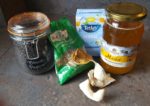If you’ve never tried home brewing before, you’re probably wondering “how hard is it to brew beer at home?”.
In which case I’ve got good news for you. Homebrewing your own beer is as easy or as difficult as you want to make it.
It is incredibly simple to get started, and get results you’ll be happy with. Yet if you prefer, you can get really involved, and get hands-on with every aspect of the process. Your call.
Most homebrewers fall somewhere between the two extremes, fitting around their level of patience, their available space, and the amount of free time they have.
Beer Kits. Difficulty Level – Easy as falling off a bike…
At the easiest level, you can buy a beer ingredient kit, using malt extract, and brew yourself a quite acceptable beer that will be ready for you to enjoy within three-to-four weeks. The equipment you need to do this is also quite cheap, and quite simple to use, too. Cheers!

In fact, this is where I recommend you start. It will teach you the basics, and you can then build your knowledge from there if you so wish.
By the way, lots of home brewers are quite happy to stay at this level, and happily make delicious beers from ingredient kits for years.
At the opposite end of the spectrum, if you want, you can mill your own barley, mash the grains to extract their sugars, and even grow your own hops. You might like to study water chemistry.
You may choose to do some of this, given time. But you don’t need to. And certainly not right now.
Homebrewing – the early years
If you wonder how hard is it to brew beer, consider this:
For as long as there has been anything resembling human civilization, humans have been brewing.
For most of this time, we didn’t even know that yeast existed, let alone what it is and how it works.
We hadn’t yet invented thermometers, or hydrometers. We didn’t understand bacteria, and their effects on our food and drinks. (Until recently, we thought it was bad smells that caused illness, infections and food spoilage.)
Yet that didn’t stop early humans from brewing fermented drinks.
They managed fine, with just some water, some grain, and a vessel to ferment their booze in.
Nowadays, it’s easy to get hold of commercially-produced high quality yeasts.
You can get ready-milled grains delivered to your door, ready for you to make wort yourself…
…Or skip that step entirely, and get started with a beer ingredient kit, or liquid malt extract in a can.
So, how hard is brewing beer from a beer ingredient kit?
All of the instructions you need should come with your beer ingredient kit.
The steps will most likely be:
- Sanitise your equipment. Fermentation vessel (probably a 5-gallon bucket, with a tight-fitting lid), airlock, thermometer, hydrometer, large plastic or metal spoon, or brewer’s paddle. If you’re planning on using an immersion heater, sanitise this, too. Also a jug for re-hydrating your beer yeast, and something to stir it with.
- At the same time, soften your liquid malt extract in hot water.
- In around half an hour, mix your softened malt extract in your empty fermentation vessel with one gallon of hot water, and any brewing sugar that is included.
- Now add about three gallons of cold water.
- Check the temperature of the liquid, and use the remaining one gallon of water to bring the malt to the target temperature. In the case of ales, this will be around 20 to 25°c.
- Take an Original Gravity reading, using your hydrometer. Instructions can be found here…
- Meanwhile, re-hydrate your yeast, according to the instructions on the pack. (Ignore the instructions with the kit if it says to sprinkle the dried yeast straight onto your wort. It will still work, but you’ll have less viable yeast.) Bear in mind different yeasts like different temperatures.
- Finally, once your yeast is re-hydrated, add it to your wort, fit the lid tightly, and place your air-lock, finally half-filling it with either a flavourless spirit such as a cheap vodka, or some (cooled) boiled water.
- Wait for at least 5 days before adding any hops for the dry-hopping stage, if extra hops are part of your kit.
- After a total of around ten days with most ales, fermentation should be complete, and often sooner.
- Check fermentation has finished using your hydrometer. Take a Final Gravity reading, if you want to calculate the alcohol content.
- You can now package your beer in a keg or in bottles, as you prefer.
- To carbonate your beer, you’ll want to add some priming sugar, and allow secondary fermentation to take place. The carbonation that’s possible simply by doing this is quite cool indeed.
- Leave your beer in a warm place for around five days.
- Finally, chill your beer, and ideally leave it to settle and clear for a week or two. To be honest, this is the stage I find most difficult, as I am never able to wait that long. It’s usually still delicious!
See, brewing beer is not too hard, is it?
Just a few steps, none of which are rocket science. I told you there was nothing to worry about.
What next? Partial Mash, the second easiest way to brew your own beer…
Having tried using kits a few times, you may like to give a go using extracts combined with what we call specialty grains.
Because although there are a lot of superb kits out there, you will always be limited to a degree.
For many homebrewers, using malt extract but combining it with a partial mash using actual grain, is an easy, convenient halfway house between using beer kits, and going full-on into All Grain brewing.
It’s a little more involved, but that’s its appeal.
In addition to the basic extract brewing equipment, you’ll also need a large stockpot with a volume of 15L minimum, and a grain bag.
You can choose either dried (DME) or liquid malt extract (LME). These come in different shades from light to dark, to suit different styles of beer. They can also be flavoured with hops, or not. I’ll be talking about these, later.
And you’ll need specialty grains and some bittering hops.
- In your 15 L stockpot, heat 11 litres of water to 65°c, and place your grains in the grain bag, which you’ll have tied-up, having made sure to leave enough space for the grains to move around.
- The grains should now be kept in the bag, keeping the temperature of the water as close to 65°c as possible, for 30 minutes.
- Lift the grain bag gently out of the stockpot, and allow it to drain back into the pot. I’ve read that you shouldn’t squeeze the bag, though I always do! If you don’t, you can expect to lose a fair bit of your mash efficiency…
- Add your malt extract to the pot, and mix. (If you are using dried malt extract, you’ll be well-advised to mix it first with some cold water, as it dissolves more effectively in cold water than warm…)
- Bring the contents of the pot to a boil, and then add your bittering hops, ideally in a hop bag.
- Keep the pot on a rolling boil for one hour, making sure it doesn’t catch and burn at the base of the pot.
- But don’t leave the pot unattended. Guard it with your life, as it only takes a moment for the mixture to boil over.
- After one hour, turn off the heat, and add any flavouring hops if they’re required in your recipe. Leave them in for 30 minutes.
- You’ve now got wort. Cool it down to below 50°c, for safety’s sake. You can throw some ice cubes into it, or put the pan into a sink or the bath, surrounding the pot with cold water.
- Transfer the wort into your fermenting vessel, carefully avoiding adding the sludge at the bottom (or trub) to the fermentor. You may need to use a sterilised sieve.
- Top-up the contents to the number of litres specified in the recipe with cold water.
- Once the temperature is low enough for your yeast to thrive, below 26°c for ale yeast, and less for lager yeasts, you can add the yeast, which you will have properly rehydrated first.
- From here, it’s the same process as using a beer kit. Fit the lid tightly, and place your air-lock, again half-filling it with either a flavourless spirit such as a cheap vodka, or some (cooled) boiled water.
- Wait for at least 5 days before adding any hops for the dry-hopping stage, if extra hops are part of your recipe.
- After a total of around ten days with most ales, fermentation should be complete, and often sooner.
- Check fermentation has finished using your hydrometer. Take a Final Gravity reading, if you want to calculate the alcohol content.
- You can now package your beer in a keg or in bottles, as you prefer.
- To carbonate your beer, allow secondary fermentation to take place, as before.
- Leave your beer in a warm place for around five days.
- Finally, chill your beer, again ideally leaving it to settle and clear for a week or two.
All Grain Brewing – It’s more involved, but it’s still not rocket surgery!
The reason I never really got into partial mash brewing is that the process is so close to All Grain brewing.
I figured, why go only half-way.
But no judgment. And partial mash brewing may be more appropriate if you have very limited space.
But, in spite of what you may believe, you don’t need to spend a king’s ransom on specialist brewing equipment to jump straight from extract brewing to all grain.
I really overthought the whole process, and hopefully I can help you avoid doing the same.
I thought that to go down the All Grain route, I was going to need shiny new, and fairly expensive gear. Such as the Grainfather G70 that I still covert. But after some reading, I found out about BIAB, or Brew-in-a-Bag, and I realised that this was well within my comfort zone, and well within my budget.
Suffice to say, if you are feeling confident enough to try a partial mash, there really isn’t much more involved in going All Grain, using BIAB.
I’ll be explaining about BIAB later, as it’s my preferred method of brewing for the moment – although one day I’m sure I’ll lose my will-power and pony-up for an all-singing, all-dancing all-in-one brewing machine!
Conclusion
I hope I’ve answered “how hard is it to brew beer?”, not just by brewing with extracts or kits, as most people start out, but also how easy it really is to make a beer more-or-less from scratch, using big bags of grain. And I hope you now have the confidence to give it a try yourself and discover for yourself what a rewarding hobby brewing can be!


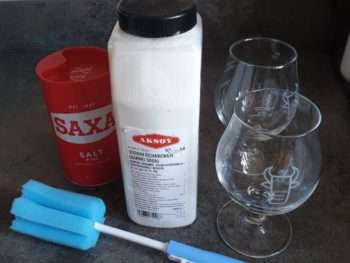

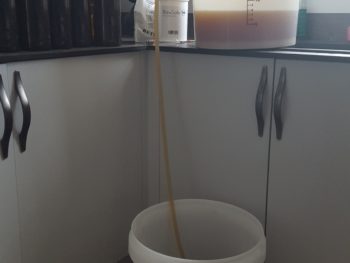
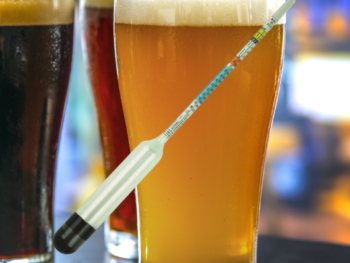
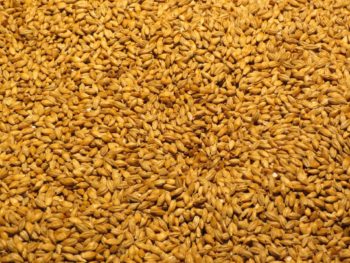
 Extract Brewing vs All Grain Brewing – Where Should I Start?
Extract Brewing vs All Grain Brewing – Where Should I Start?



